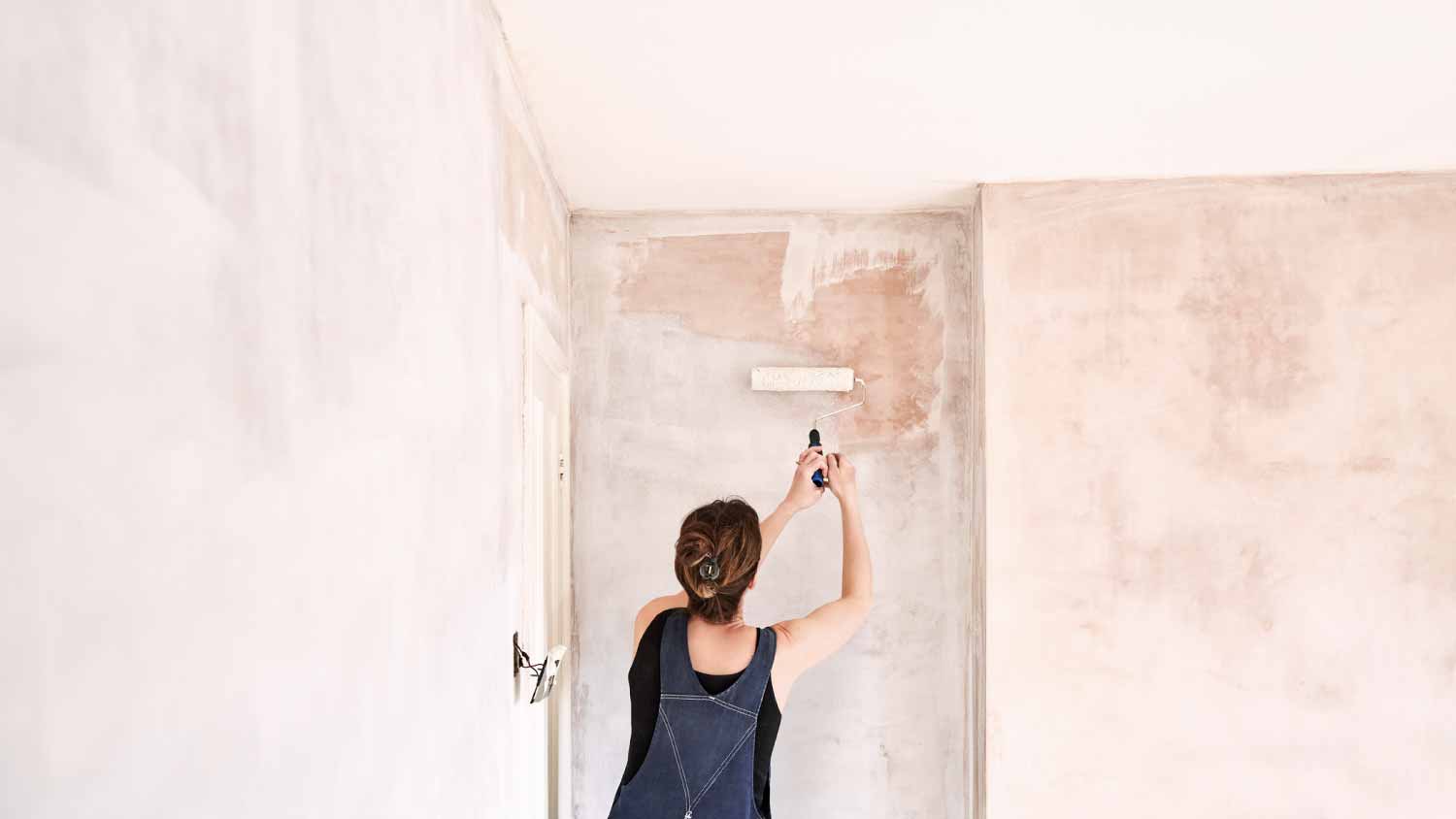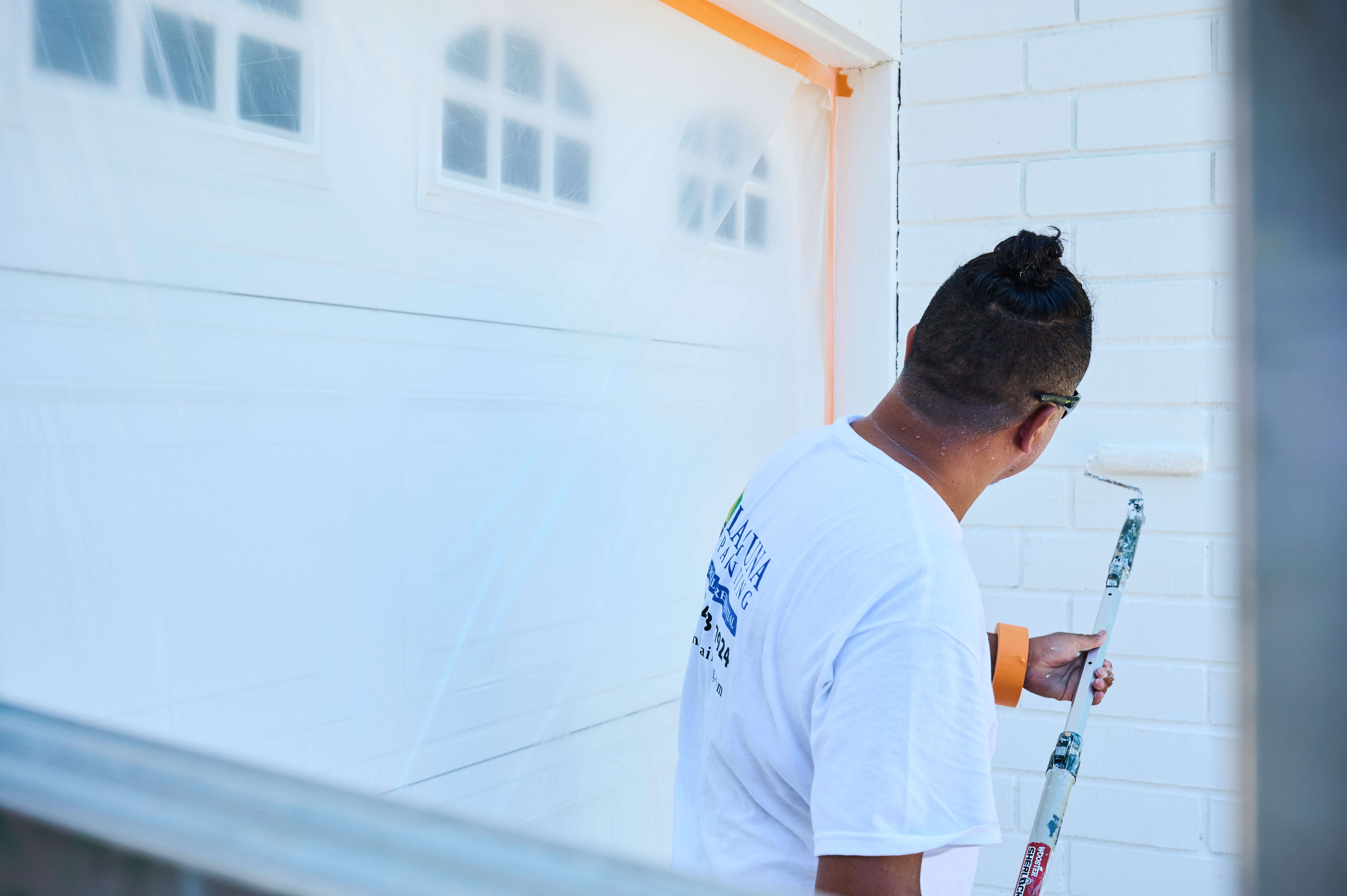
The cost to paint the interior of a house in Orlando, FL depends on size, layout, type of surface, and more. Learn what factors can influence your total in this guide.
Brush up on floor protection before you start painting


Giving your walls a fresh coat of paint is one of the best ways to breathe new life into your space. Getting paint splatters and drips on the floors? Not so much. Use these tips on how to protect floors when painting to keep the new color where it belongs.
When you’re ready to tackle an interior painting project, you may worry about the logistics of painting when the room is already furnished. It’s a good idea to remove everything from the room you’re painting, including furniture, decor, and all other belongings.
According to Angi data, though, 58% of homeowners are painting rooms that are already furnished and occupied, so pros know how to navigate this situation and protect your belongings. If you have particularly bulky furniture pieces, you can move them to the center of the room and cover them if moving them to another area isn’t realistic.
Roughly 31% of homeowners, by contrast, are looking to paint an empty space. While this does make the project a bit easier, having an occupied space won’t hinder the project.
Laying down floor protection before painting is crucial, but so is vacuuming before you get started. Dirt and other debris caught under your drop cloths can damage your floors, and scratches and gouges are just as unsightly as rogue paint drips.
Here’s a pro painting tip that a lot of DIYers miss: start by laying down masking tape or painter’s tape around the perimeter of your room, adhering it directly to the floor. This will act as a base layer to help keep spills off of your floor, and it will also give the top layer of tape something to stick to for maximum protection.
Some people will choose to add painter’s tape at the top of the baseboards to secure the drop cloth. When it comes to whether to paint the walls or trim first, most people paint the walls first, going from the top down.
Speaking of spills, you can also use a smaller container of paint to limit the mess if you do run into an issue. Tipping over a pint-sized can of paint may create a big mess, but cleaning it up is going to be much easier than if you spilled a full gallon-sized can. Know how much paint you need and use the appropriate-sized container.
Next, lay down your actual floor covering. If you’re painting baseboards over carpet, use canvas drop cloths, and use rosin paper if you have wood floors or tile. For a more affordable option, you can use a thick sheet of plastic, but know that this won’t be reusable. Make sure the edge of the material around the perimeter of your room extends about halfway over that first layer of tape.
PS: If you plan to remove a wallpaper border before painting, know that you may be in for a damp, messy process, so cover the floors before you remove any wallpaper or borders, too.
Canvas drop cloths are often professional painters’ go-to floor covering. They resist tears and soak up paint drips effectively, keeping paint from reaching the floor underneath (and reducing the risk of tracking it throughout your house). You can wash the canvas and reuse it for many jobs.
Rosin paper works especially well over hard floors and heavy furniture you can’t move. Also called heavy paper, rosin paper conforms nicely to uneven surfaces. It’s thick enough to prevent paint drips from seeping through to the floor below.
Masonite sheets consist of reusable compressed wood fibers that provide a durable option for protecting floors while painting. They’re especially useful over delicate flooring, such as marble or tile. They’re a rigid option that absorbs the impact of dropped items while also protecting the floor underneath from paint.
Plastic drop cloths are a popular, affordable selection for protecting floors, especially when using oil-based paint. Thick plastic has waterproof capabilities that prevent paint from bleeding through to the floor underneath. However, because the plastic will not absorb the paint, you run the risk of stepping on wet paint drips and tracking them through the house.
Next, use more masking tape or painter’s tape around the perimeter to sandwich the protective material between the two layers of tape. This helps keep the covering in place and will help avoid small spills from seeping underneath the protective layer around the edges.
If you plan to spray paint the walls with a spraying machine, it’s especially important to secure the covering with tape to hold it in place against the pressure of the spray nozzle.
Place a doormat or some cloth rags just inside the door. Before you leave the room, you can wipe your shoes to get any rogue paint off of them to prevent tracking paint through the rest of your house. Here’s another pro home painting tip: make sure you have a path of protective material leading to the mat to prevent tracking inside the room, too.
Even with all that preparation and floor protection, painting mistakes happen. That’s why it’s always a good idea to have cleaning supplies prepped and ready before you get started with your home painting project. A small drip here and there isn’t a huge deal if you can clean it up before it adheres. Have a bucket of soapy water handy, along with some paper towels or a clean cloth rag. If you notice an accident, get to cleaning immediately to prevent the paint from drying on your floors.
If all of that seems like too much prep work, or you’re still nervous about getting paint on your floors, don’t be afraid to call in a pro. A local interior painter will be able to get the job done more quickly, and their experience should make spills and drips a non-issue.
Precision and professionalism define Custom Paint Jobs LLC. We couldnt be happier.
Window Depot did an amazing job on my deck. I wasnt sure what I wanted to do, but their composite decking was affordable and will last a long time. I am excited to have family over, and I am no longer embarrassed by my backyard. Jeff and the ground crew were polite, respectful, and caring for...
AFS was excellent from start to finish. Jess, the sales associate, was fantastic...very knowledgeable and very professional. The installation crew was excellent. I couldn't be more pleased with the process. Best of all, my new floor looks fantastic!
We used Unique Hardwood Floor LLC three years ago to work on the floors of a 70 year old home that needed a great deal of work. Some floors needed repairs, some were replaced and others just needed to be refinished. It was a complicated job as they needed to blend the old and the new to...
From average costs to expert advice, get all the answers you need to get your job done.

The cost to paint the interior of a house in Orlando, FL depends on size, layout, type of surface, and more. Learn what factors can influence your total in this guide.

Limewash can add timeless texture to your living space. The cost to limewash interior walls depends on factors like surface area, materials, and prep work.

The cost to paint the interior of a house in New York, NY depends on size, layout, type of surface, and more. Learn what factors can influence your total in this guide.

Have an old piece of wood furniture that desperately needs a refresh? Learn how to paint over stained wood and if this is a DIY project well-suited for you.

Painting can be a tedious job, but it all comes down to the tools you use. Learn whether it’s better to use a paint sprayer or roller to get the job done.

If your home has windows galore, you’ll want to pick a color scheme that plays to that advantage. Use these paint colors for rooms with lots of natural light.